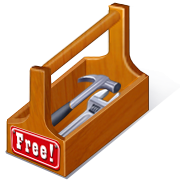 Running a business is filled with regulations everywhere you turn. These can drain precious time away from the core of your business, but if you ignore them, there could be huge financial consequences you may be risking without even realizing it. The best way to handle them is to understand your exposure, consult with any experts you need to bring in, create a checklist, and make sure you’re in compliance.
Running a business is filled with regulations everywhere you turn. These can drain precious time away from the core of your business, but if you ignore them, there could be huge financial consequences you may be risking without even realizing it. The best way to handle them is to understand your exposure, consult with any experts you need to bring in, create a checklist, and make sure you’re in compliance.
Here’s a head start in creating that checklist. This is by no means a comprehensive list. These items apply to most businesses and are often overlooked. Go through the list to make sure there aren’t any surprises for your business. If there are, feel free to contact us, and we’ll help you find out where to get answers.
1. EIC notice to employees.
It’s now required annually to notify certain employees about the Earned Income Credit so that more people who need it can take advantage of it. If you have employees, the next deadline for this compliance item is the first week of February 2013 and can be met if you get the right W-2 forms. Details are in IRS Publication 15.
2. Corporate meeting minutes.
Just about the first thing the IRS will ask for in an audit is your corporate meeting minutes. If you are incorporated as a C Corp or S Corp, you need properly formatted and executed documentation of the annual shareholders’ meeting, even if it is just you. The risk in not having it includes a potential increase in tax liability from undocumented deductions.
3. PCI compliance.
PCI stands for Payment Card Industry, and if you take credit cards, you may have compliance requirements under this industry standard. The standard is designed to provide the cardholder with a minimum acceptable level of security, and your requirement is to maintain certain processes and procedures to safeguard the stored credit card data.
4. Document retention.
While it’s a great thing to go paperless, you may get caught by surprise if you are not downloading and preserving the items you used to have on paper. The IRS and other agencies still need proof of these items in order to approve the deduction. This includes invoices that are coming via email in PDFs, bank statements you’ve gone green on, and direct deposit payroll stubs, to name a few.
Fax copies fade after a few years and can catch you by surprise when you go to look up an old record and can no longer read it. It’s best to scan fax receipts in so they will stay readable for the length of the retention period.
You’ll also want to keep up-to-date on how many years it’s necessary to maintain these items in the case of an audit.
5. New hire reporting.
In small business, most of us are hiring so infrequently that it’s easy to forget this one. Most state unemployment agencies require that you report new hires within about three weeks of their start date. The purpose of this is to track fathers who have missed child support payments.
6. Changes in state tax compliance.
As geographic borders disappear and our business expands, we need to regularly re-evaluate state requirements on income, franchise, and sales tax obligations. It can be too easy to “do things the way we’ve always done them” and forget that as our business expands into new territories, new obligations can arise.
If we’ve hired a virtual employee in another state, we may have new obligations. If we’ve earned money during a speaking engagement in another state, we may have income to report in that state. And, of course, if we open new offices in another state, we have new compliance items to deal with.
7. Payroll posters.
Surprisingly, the highest payback item in this list for those of you that have employees may be posting your payroll posters. Compliance usually costs less than $100, and the fines avoided can be as much as $17,000, a pretty big dent, no matter how big your small business is.
Small Business Compliance
Did you get caught by any surprises? If so, let us know how we can help to bring your business into compliance and help you avoid unnecessary costly risks.
 According to the Association of Certified Fraud Examiners (ACFE), over $3.5 trillion is projected to be lost to fraud worldwide in 2011 alone. The typical organization loses 5 percent of its revenues each year. While we have a lot to think about as entrepreneurs, we do need to take time to educate ourselves about this unfortunately common business loss.
According to the Association of Certified Fraud Examiners (ACFE), over $3.5 trillion is projected to be lost to fraud worldwide in 2011 alone. The typical organization loses 5 percent of its revenues each year. While we have a lot to think about as entrepreneurs, we do need to take time to educate ourselves about this unfortunately common business loss. If you have an endless to-do list, you’re not alone these days. Most of us are constantly looking for ways to work smarter and get more done. Here are six quick tips to help your productivity so you can go home early.
If you have an endless to-do list, you’re not alone these days. Most of us are constantly looking for ways to work smarter and get more done. Here are six quick tips to help your productivity so you can go home early. If you’re looking for ways to boost your productivity, technology is a great place to start. The good news is there are many free options available. Here are five favorites you might not know about.
If you’re looking for ways to boost your productivity, technology is a great place to start. The good news is there are many free options available. Here are five favorites you might not know about. You’re sitting in a room with 30 other business entrepreneurs. Each of you has one minute to introduce themselves to the group. You are number 25 to speak. Will anyone listen? What can you do or say to catch your peers’ attention, be memorable, and have them approach you for business? Most importantly, what can you do to get every business card in the room wanting what you have (so you can go to fewer networking meetings and get back to running your business)?
You’re sitting in a room with 30 other business entrepreneurs. Each of you has one minute to introduce themselves to the group. You are number 25 to speak. Will anyone listen? What can you do or say to catch your peers’ attention, be memorable, and have them approach you for business? Most importantly, what can you do to get every business card in the room wanting what you have (so you can go to fewer networking meetings and get back to running your business)? When was the last time you praised your employees or contractors? Hopefully, you’ve developed the good habit of frequently praising your team members, and if you haven’t, you’re certainly not alone. Most of us do not get enough praise, so there’s a strong likelihood there’s room for improvement when it comes to recognition of a job well done in just about every workplace. Here are some tips to praise more and help your workers flourish.
When was the last time you praised your employees or contractors? Hopefully, you’ve developed the good habit of frequently praising your team members, and if you haven’t, you’re certainly not alone. Most of us do not get enough praise, so there’s a strong likelihood there’s room for improvement when it comes to recognition of a job well done in just about every workplace. Here are some tips to praise more and help your workers flourish. One of the main reasons clients leave is because they feel ignored. The cost of ignoring clients is high; you have to do more marketing and replace those clients when they leave. The antidote to this is easy: just stay in touch more with clients, and let them know you care about them and their business. Here are seven ways to stay in touch with all your clients and especially your long-term customers.
One of the main reasons clients leave is because they feel ignored. The cost of ignoring clients is high; you have to do more marketing and replace those clients when they leave. The antidote to this is easy: just stay in touch more with clients, and let them know you care about them and their business. Here are seven ways to stay in touch with all your clients and especially your long-term customers. The passing of Chet Holmes this week saddened me greatly. I am an ardent fan of this author of the bestseller The Ultimate Sales Machine, which I have read or listened to dozens of times. Intensely disciplined and fiercely competitive, Chet reengineered the sales process into a finely tuned piece of machinery resulting in his extraordinary success. He has inspired thousands of people seeking business acuity and excellence. I can only speculate at the hundreds whose lives have been profoundly influenced by this brilliant man. I know mine has been. May he rest in peace.
The passing of Chet Holmes this week saddened me greatly. I am an ardent fan of this author of the bestseller The Ultimate Sales Machine, which I have read or listened to dozens of times. Intensely disciplined and fiercely competitive, Chet reengineered the sales process into a finely tuned piece of machinery resulting in his extraordinary success. He has inspired thousands of people seeking business acuity and excellence. I can only speculate at the hundreds whose lives have been profoundly influenced by this brilliant man. I know mine has been. May he rest in peace. Just about everyone suffers from a lack of time to do all the things they want, or even need, to do in their business. One of the solutions to freeing up your time is to delegate. The question is, what are the most effective tasks to delegate? Here are ten ideas for you to consider (or reconsider) to free up your valuable time for more important things.
Just about everyone suffers from a lack of time to do all the things they want, or even need, to do in their business. One of the solutions to freeing up your time is to delegate. The question is, what are the most effective tasks to delegate? Here are ten ideas for you to consider (or reconsider) to free up your valuable time for more important things. From the day a prospect calls you, emails you, or enters your shop, what do they see, hear, feel, taste, and smell? Is it pleasant?
From the day a prospect calls you, emails you, or enters your shop, what do they see, hear, feel, taste, and smell? Is it pleasant?

.jpg)



